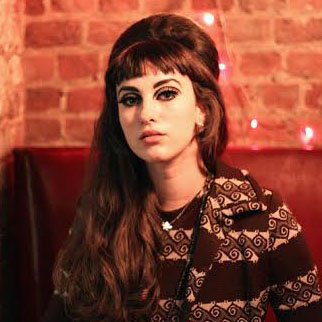 Treacle Holasz is an emerging Irish, Ukrainian choreographer who combines her eclectic heritage to create comical and engaging physical theatre. Her latest piece ‘Why Fronts: A Contemporary Lap Dance’ is being showcased as part of The Place’s Resolution! 2014 festival.
Treacle Holasz is an emerging Irish, Ukrainian choreographer who combines her eclectic heritage to create comical and engaging physical theatre. Her latest piece ‘Why Fronts: A Contemporary Lap Dance’ is being showcased as part of The Place’s Resolution! 2014 festival.
When did you begin dancing, where and why?
At around the age of 4 my mother’s friend, Lucy, gave us some Tchaikovsky recordings, that I would put on and dance around the room doing faux ballet; I had so much fun that my mother started to take me to ballet classes at our local YMCA. Then, like so many of my dance friends, I regrettably stopped taking classes, and it wasn’t until the age of 12 that I rediscovered my passion for dance and creating movement. My skills were nurtured at The Place as part of the first year of their CAT scheme and their youth company – Shift.
What were your early years of dancing like?
So incredibly fun! One of the reasons I love teaching dance workshops and community projects now is because you can see in others the sheer excitement to learn! I have always been ambitious, from a young age I juggled studying for my GCSEs alongside attending dance classes every night of the week. Thankfully I have wonderfully supportive parents who worked very hard to not only pay for my lessons but drive me to classes. Despite never having experienced contemporary dance themselves, they have always encouraged me. I think it’s really empowering to be young and discover a past time that requires both discipline and creativity.
How long have you been performing? Did you start young?
I was painfully shy, up until the age of 17, so I was really only comfortable when I was performing. I performed throughout my school years, Shift in particular was a great and formative experience; as well making some great lifelong friends I was also given the opportunity to work with incredible choreographers like Martin Lawrence, Tom Dale and Zoi Dimitriou. I continued to perform throughout my training and on graduating performed with The March Performance Group. We were real pioneers, a group of feminists lead by American thinker Kate March. Shortly after, I met Cypriot choreographer Marina Poyiadji and we were commissioned by the European Union in 2012 to create and present a duet in Cyprus entitled ‘DECLARE WHAT’.
This work was an intensely intimate process, working together so closely we were almost able to second guess each others next movement. This collaboration sparked my interest in vocal rhythms of language, a device which I explore more throughly in my latest piece ‘Why-Fronts – A Contemporary Lap Dance’.
Where did you train and what was a typical day like?
I trained for 2 years at Lewisham College. It was fantastically brutal, we were like a dance army, we’d get in for around 8.30am to warm up then have classes from 9am-5pm, then if you were working on choreography you sometimes didn’t get away till 8pm.
I was very privileged to learn under Buddy Watkins and Ragnhild Olsen, both very different but really memorable teachers. After Lewisham I briefly went up to Northern School of Contemporary Dance but I couldn’t leave London so I decided I wanted a choreography based degree, there are some really fantastic university courses. I chose Middlesex University; a typical day was pretty varied but generally speaking you had two technique classes. The choreography classes were always my favourite as from the start there was a clear emphasis on discovering our own choreographic voice. I set up a company in my second year called DRA – we would perform choreographies at London venues to live bands and DJs, and loads of our fellow Middlesex dancers turned up in support. It was and is a really friendly, approachable atmosphere and I’m excited to be teaching a choreography workshop on 3 February at Middlesex, hopefully acting as a springboard for more collaborations in the future!
What is a typical day like now?
Very different, literally every day is different! Freelancing is tough but you feel like you make yourself achieve and every day counts. Rehearsals for my current piece
begin with tea and a quick gossip, then we all lay down, we do a series of set breathings and face warms ups then we start creating noise, warming up our lungs from there we will begin to move first improvised then into our more set material with my wonderful dancers Georges Hans and Charlie Ford. Some days I teach and rehearse with The Meyer Dancers (a 1960’s GoGo group founded by Holasz). Whenever possible I try and a fit in a hot chocolate with my friend Ruby Isla to discuss fun ways to promote my work through social media, and how to spread the word about the various choreographic workshops that I offer, with the aim of enabling others to discover their unique choreographic voice.
Do you still take classes? How do you keep on top of your technique?
When I was at Uni I did take class at The Place, but as a freelancer I can’t commit from one week to the next in case I’m performing or teaching – so I really rely on drop in classes. My personal 2014 resolution is to take up a ballet class again, I think it’s a technique you just fall in love with again as you get older. It’s a bit like being an artist when you learn first draw, you use a pencil, then you get excited by inks, water colours and oil and you sort of take the pencil for granted but without the pencil the painting is arguably a mess so with the discipline of the pencil you find a freedom to be creative. So you could say that Ballet is my pencil, Ha!
What’s the best part of performing?
When you see someone in the audience smile or laugh or even just look you dead in the eye and you think “YES! They get it”. I think it’s far harder to make an audience laugh and connect with you as a human being rather than an unobtainable ‘performer’. I never want to lose sight of the fact that dance should be enjoyable escapism. I’m a born entertainer: if you are paying us money, I want you to go home thinking “We just got entertained.” A personal pet peeve of mine is when I go and see a work and company are so self indulgent that they appear to be enjoying the evening more than the audience.
What piece will you be performing at Resolution!? What is it about?
I’m really proud of this work called ‘Why Fronts: A Contemporary Lap Dance’ (or if you are on the twitter-sphere, #Yfronts). Essentially it is a piece which explores the influence that gender has on society’s attitude towards movement, questioning why certain movements performed by a woman are viewed as provocative, whereas exactly the same movements or pose performed by a man are deemed
animalistic? We are also debating whether the popular but controversial dance form of a lap dance should be considered pro or anti-feminist? My dancers Georges and Charlie had a workshop with acclaimed pole dancer VEGAS (Sasha Allen) in the art of pole and seduction; she has been really influential in the work as she gave us such a frank account of her professional working life.
Which part of contemporary dance do you enjoy most?
I love moving the most, physically dancing. It is a varied and rich style and to an extent it is a misunderstood style that is often under represented – I’d like to see it be given a lot more coverage. I strongly believe that people should be encouraged to feel OK if they “don’t get it”, the wondrous nature of contemporary dance is that is doesn’t have a linear and one dimensional narrative, it isn’t something that needs to be ‘got’ or understood fully, but more emphasis needs to be placed on works being created purely for enjoyment purposes.
What advice would you give to someone aspiring to be part of the dance industry?
Not to listen to advice! There really is no magic recipe or clear path into any creative industry. I think you can carve your own path and make your own opportunities; you don’t always need to rely on platforms or funding awards, put on events with people whose work you dig and venues you love and just make things happen, your way.
What’s next for you? When are you performing at Resolution?
We are performing on 11 February – we really want to have fun with the piece, it’s going to be more like a party than a performance, There’s a strong cultural influence from my Irish Ukrainian heritage so we have a live Bodhran player Tad Sargent joining us, we are also asking some of the audience to join us on stage, then there is talk of vodka shots… My dashing dancers be stripping down to their Yfronts so it really is one for the diary! We both hope to tour the work and also to teach our choreography workshops alongside it to dancers of all abilities. At Holasz Choreography we are all about remembering, creating and having a ruddy good time!
You can keep up to date with future dates, plans and gossip here:
- https://www.facebook.com/holaszchoreography
- or @holaszchoreog on Twitter
Why-Fronts – A Contemporary Lap Dance is part of a triple bill and is being performed alongside Jenni Wren’s Slanjayvah Danza: MinorTears and LCP Dance Theatre’s Am I. For tickets and more information please visit http://t.co/TALKUlBSZ4

 Early November saw the launch of a new strand of ResCen, the Research Centre of Middlesex University. This strand is dedicated to the reaching and works of Robert Cohan, a dancer with the Martha Graham Dance Company and now a teacher and choreographer in his own right.
Early November saw the launch of a new strand of ResCen, the Research Centre of Middlesex University. This strand is dedicated to the reaching and works of Robert Cohan, a dancer with the Martha Graham Dance Company and now a teacher and choreographer in his own right.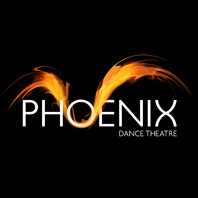 Phoenix Dance Theatre has grown over the last thirty years to become a renowned and respected British dance company. Founded in inner-city Leeds, the company has become a leading contemporary company and now completes both national and international tours in the aim to bring inspiring and entertaining dance to the widest possible audience.
Phoenix Dance Theatre has grown over the last thirty years to become a renowned and respected British dance company. Founded in inner-city Leeds, the company has become a leading contemporary company and now completes both national and international tours in the aim to bring inspiring and entertaining dance to the widest possible audience.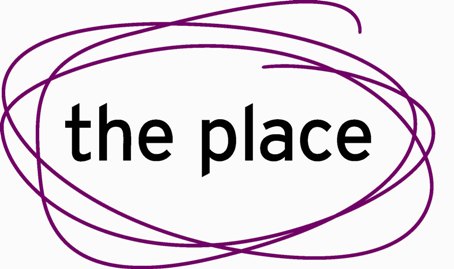 The Place is once again opening it’s annual Resolution! festival up to reviewers who wish to be partnered by a professional critic and pass judgment on some of the UK’s most promising new dance companies. The Place has engaged with audiences and participants, championed the best ideas, and created inspiring conditions for artists and enthusiasts to realise their potential for over forty years, including that of Resolution!. Combining London Contemporary Dance School, Richard Alston Dance Company and the Robin Howard Dance Theatre, together with pioneering learning, teaching, outreach, recreation and professional development projects The Place champions contemporary dance in particular, and all its strands.
The Place is once again opening it’s annual Resolution! festival up to reviewers who wish to be partnered by a professional critic and pass judgment on some of the UK’s most promising new dance companies. The Place has engaged with audiences and participants, championed the best ideas, and created inspiring conditions for artists and enthusiasts to realise their potential for over forty years, including that of Resolution!. Combining London Contemporary Dance School, Richard Alston Dance Company and the Robin Howard Dance Theatre, together with pioneering learning, teaching, outreach, recreation and professional development projects The Place champions contemporary dance in particular, and all its strands.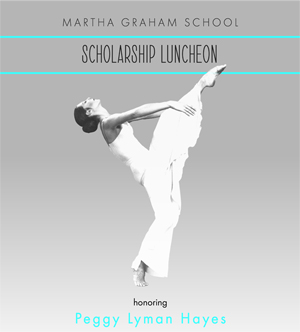 Peggy Lyman Hayes danced with the Martha Graham Dance Company from 1973 to 1988, featuring in works including Lamentation, Frontier and Acts of Light. She is one of the master instructors at the Martha Graham School of Contemporary Dance in New York and is currently responsible for restaging Graham’s works for the Martha Graham Trust.
Peggy Lyman Hayes danced with the Martha Graham Dance Company from 1973 to 1988, featuring in works including Lamentation, Frontier and Acts of Light. She is one of the master instructors at the Martha Graham School of Contemporary Dance in New York and is currently responsible for restaging Graham’s works for the Martha Graham Trust. Iconic choreographer Hofesh Shechter has been named as the individual to guest direct Brighton Festival 2014. Running from 3 May to 25 May, the Brighton Festival is an annual mixed arts event that takes place across the city. Whilst full programme details will be announced on 25 February 2014, it is already knowledge that the festival will open with Shechter’s contemporary dance company’s new production, Sun.
Iconic choreographer Hofesh Shechter has been named as the individual to guest direct Brighton Festival 2014. Running from 3 May to 25 May, the Brighton Festival is an annual mixed arts event that takes place across the city. Whilst full programme details will be announced on 25 February 2014, it is already knowledge that the festival will open with Shechter’s contemporary dance company’s new production, Sun.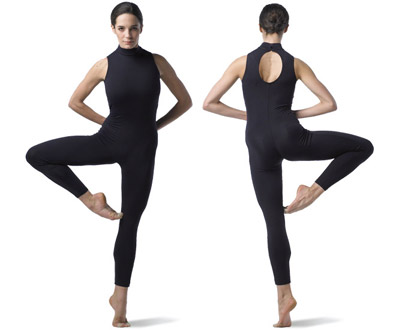 Whilst the stereotypical uniform for dance is much the same, different uniform is required for different dance schools, different exam boards and even different dance grades. For a non-dancer, the assumption of pink ballet tights and a leotard for ballet is not so far from the truth, the stereotypes also formed for tap and modern jazz. Contemporary and lyrical classes tend to be a little more free and liberal in terms of what the dancer dons, and can range from anything to short shorts and tights tops to tracksuit bottoms and baggy pyjama-style tops, known on the whole as ‘baggies’, often used in any dance class for warming up.
Whilst the stereotypical uniform for dance is much the same, different uniform is required for different dance schools, different exam boards and even different dance grades. For a non-dancer, the assumption of pink ballet tights and a leotard for ballet is not so far from the truth, the stereotypes also formed for tap and modern jazz. Contemporary and lyrical classes tend to be a little more free and liberal in terms of what the dancer dons, and can range from anything to short shorts and tights tops to tracksuit bottoms and baggy pyjama-style tops, known on the whole as ‘baggies’, often used in any dance class for warming up.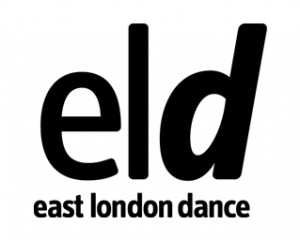 In celebrating the past, present and future of East London Dance, its celebration of 25 years of dancing success saw a huge variety of performances come together under one roof at Stratford Circus. The abundance of vitality and passion was overwhelming, with one piece even gaining the Royal seal of approval: ‘Family Tree’ was originally conceived as part of the Coronation Festival earlier this year. Featuring performers from Middlesex University, Kingston University, University of East London and One Youth Dance, it was packed full of energy and celebrated the influence of the Commonwealth on contemporary Britain.
In celebrating the past, present and future of East London Dance, its celebration of 25 years of dancing success saw a huge variety of performances come together under one roof at Stratford Circus. The abundance of vitality and passion was overwhelming, with one piece even gaining the Royal seal of approval: ‘Family Tree’ was originally conceived as part of the Coronation Festival earlier this year. Featuring performers from Middlesex University, Kingston University, University of East London and One Youth Dance, it was packed full of energy and celebrated the influence of the Commonwealth on contemporary Britain. With the now mainstream TV entertainment programmes such as So You Think You Can Dance and Got To Dance, dance culture has shifted in the UK.
With the now mainstream TV entertainment programmes such as So You Think You Can Dance and Got To Dance, dance culture has shifted in the UK.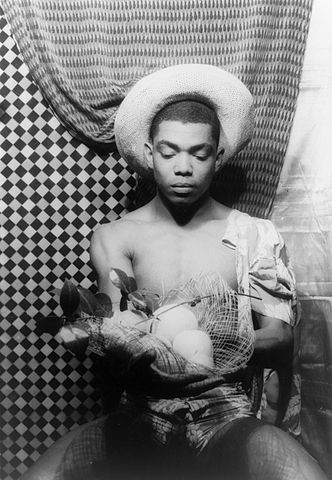 Alvin Ailey is widely regarded as one of the keynote figures in American modern dance, having established the stature of his Alvin Ailey American Dance Theater throughout the world. Ailey was born on 5 January 1931 in Texas, with his experiences of life in the rural South later inspiring some of the most memorable parts of his most popular and critically acclaimed work Revelations, through what he called ‘blood memories’: the blues, spirituals and gospel.
Alvin Ailey is widely regarded as one of the keynote figures in American modern dance, having established the stature of his Alvin Ailey American Dance Theater throughout the world. Ailey was born on 5 January 1931 in Texas, with his experiences of life in the rural South later inspiring some of the most memorable parts of his most popular and critically acclaimed work Revelations, through what he called ‘blood memories’: the blues, spirituals and gospel.